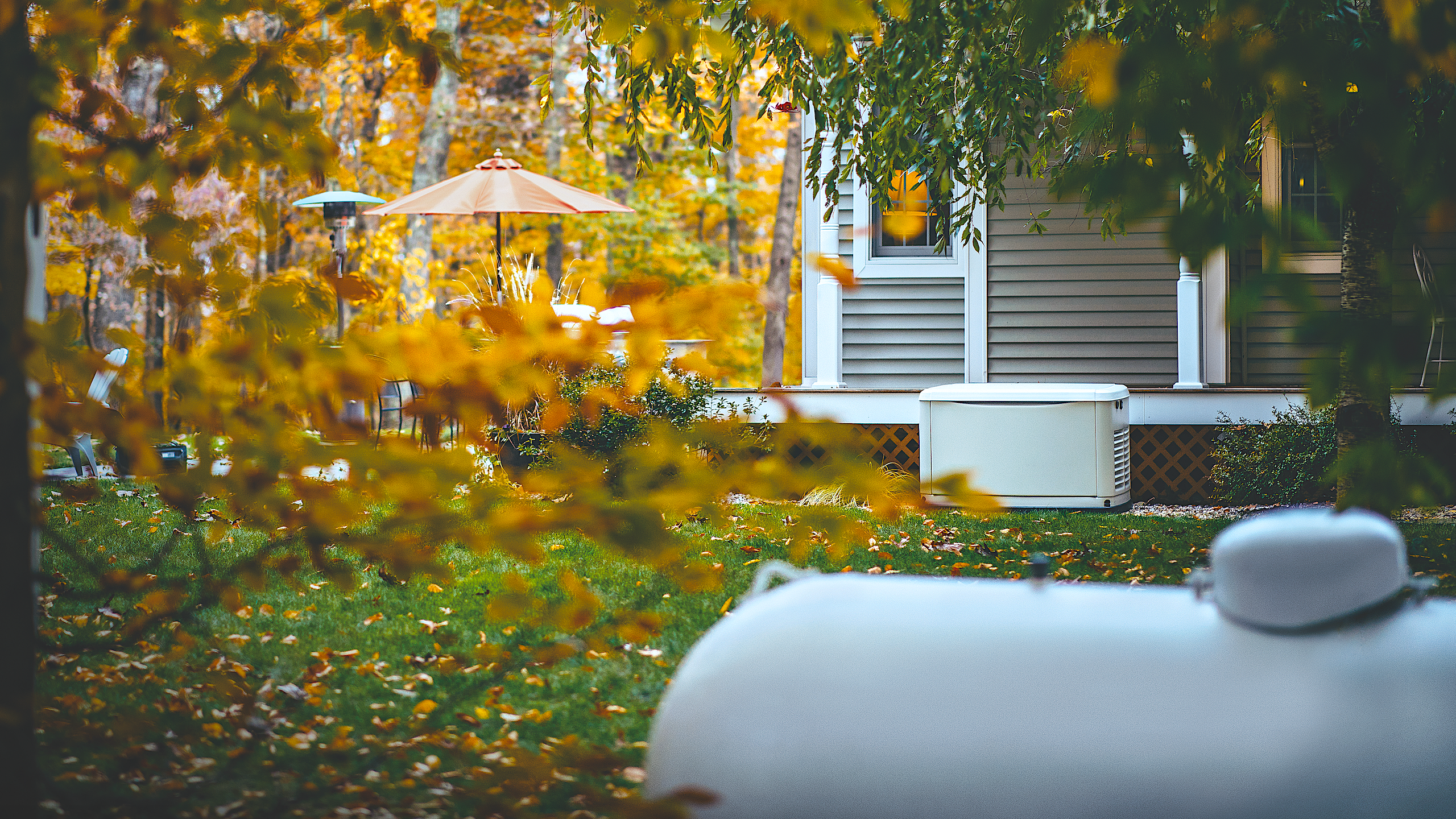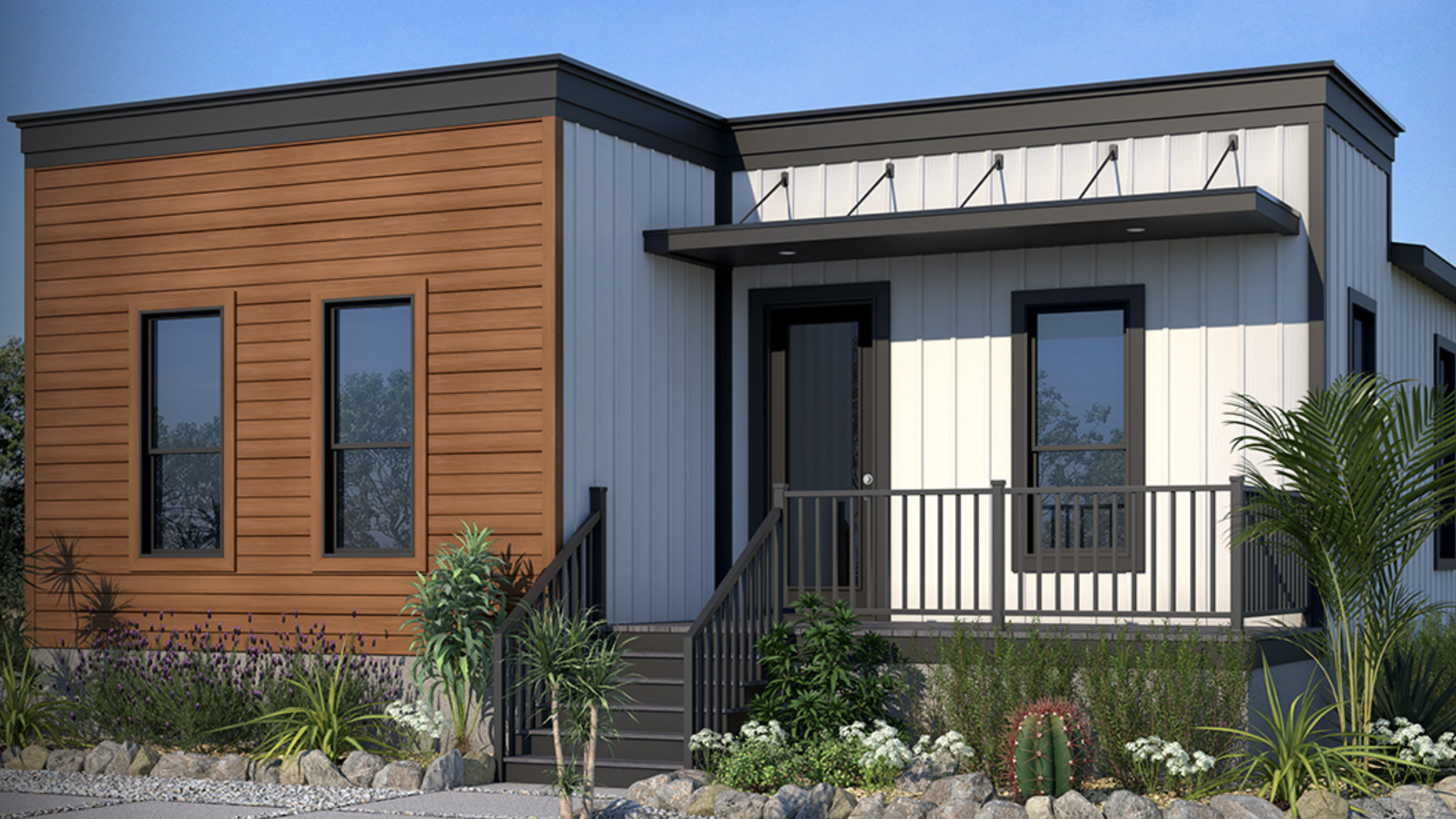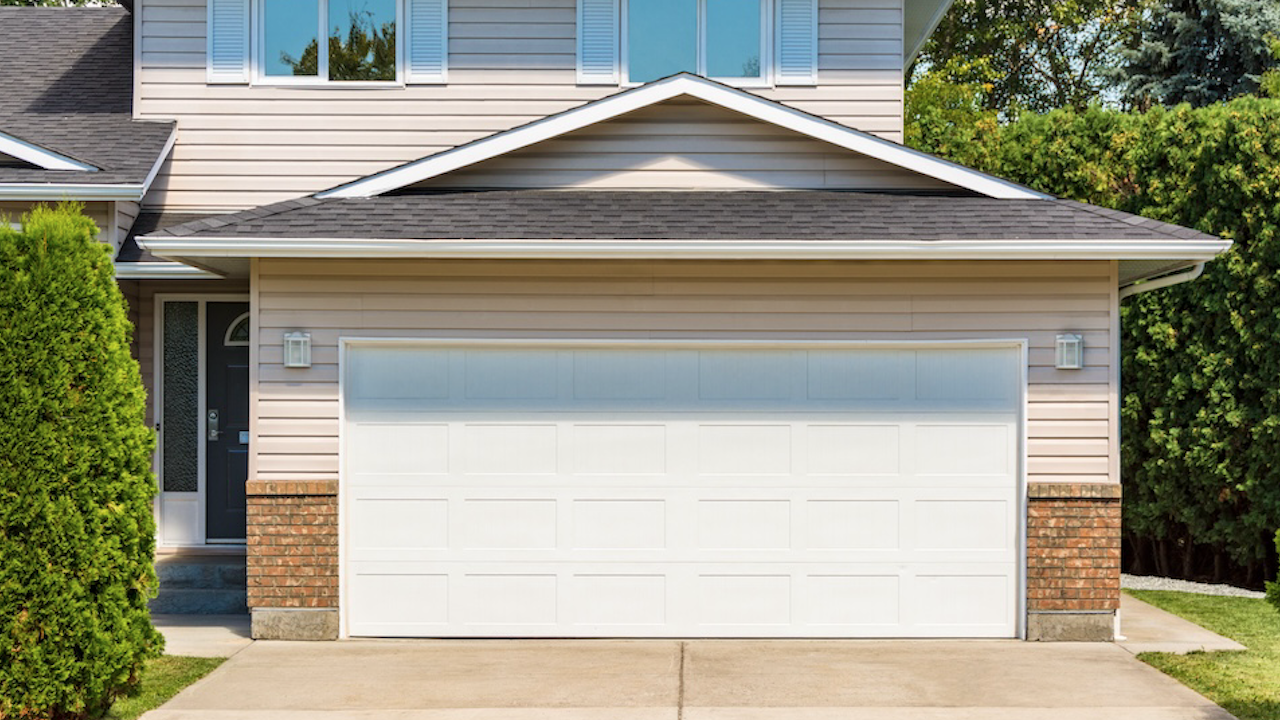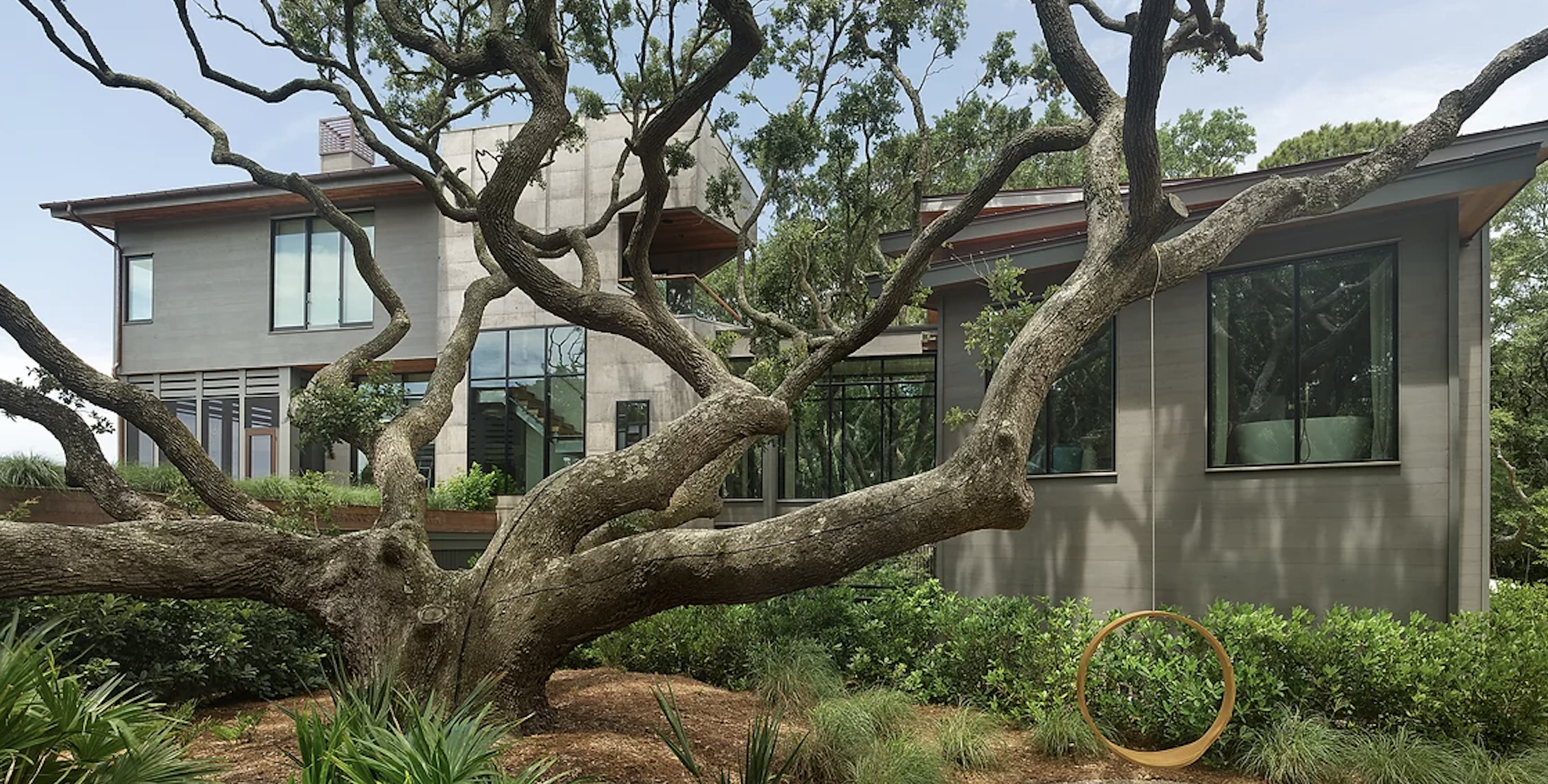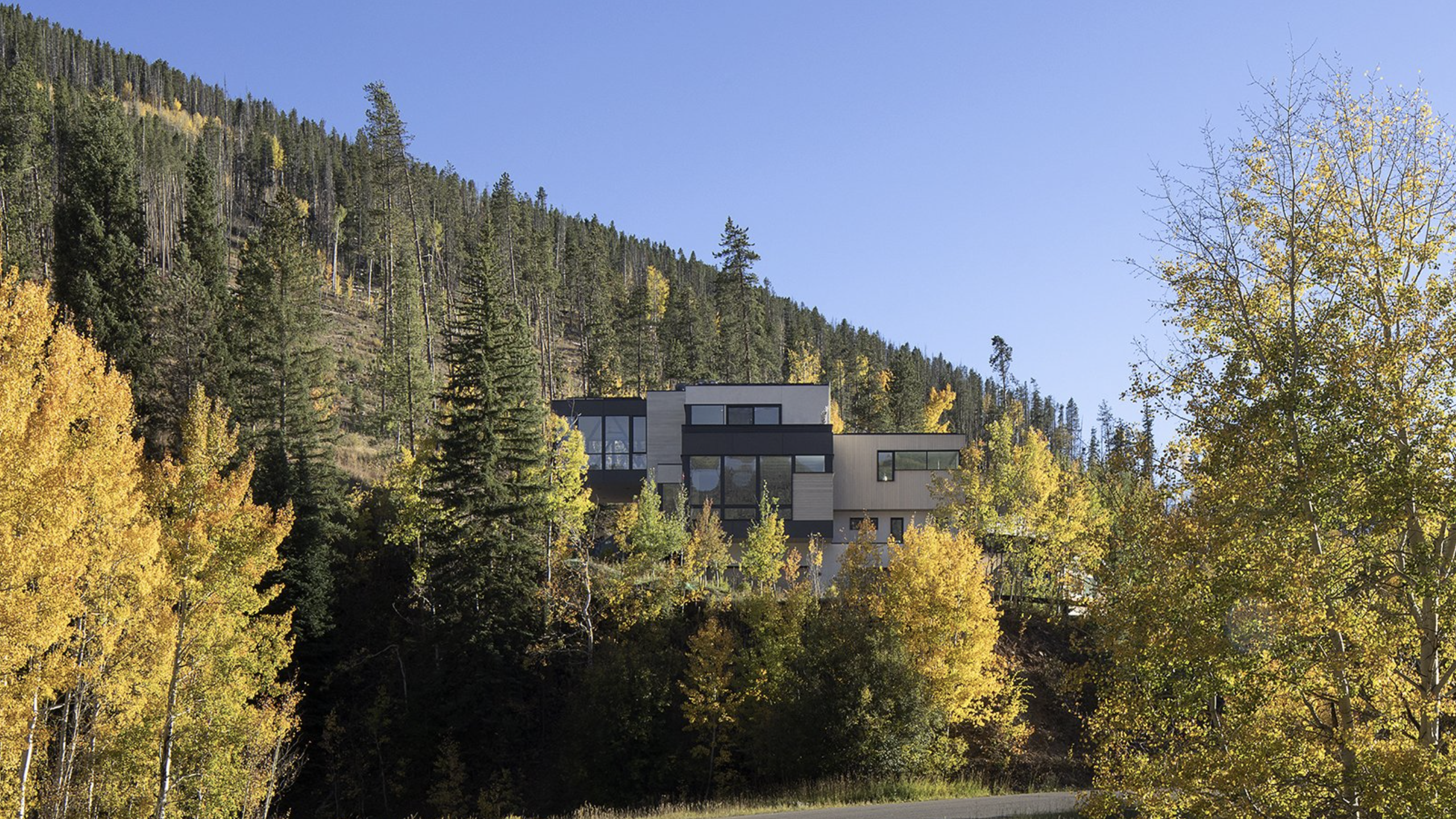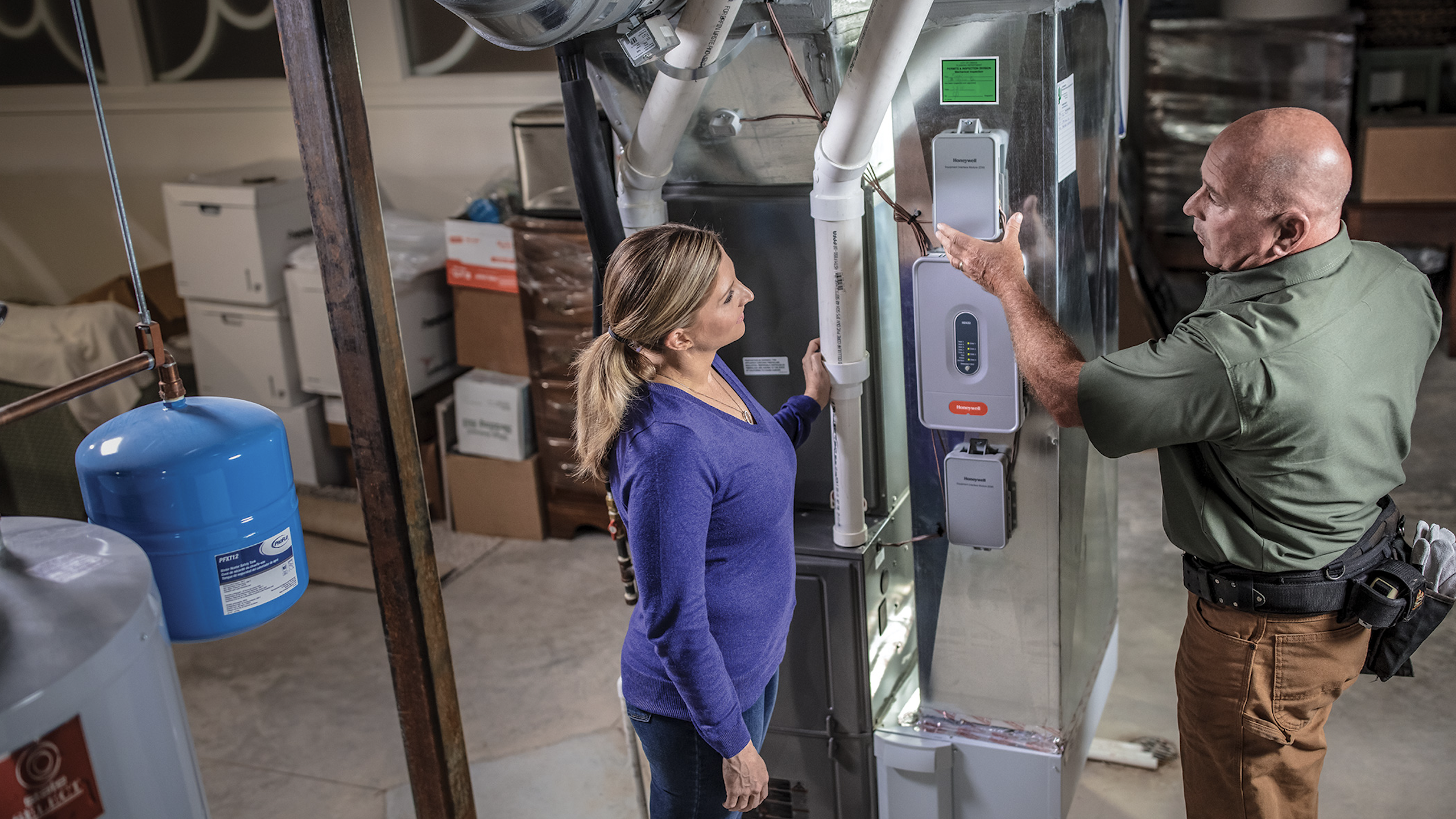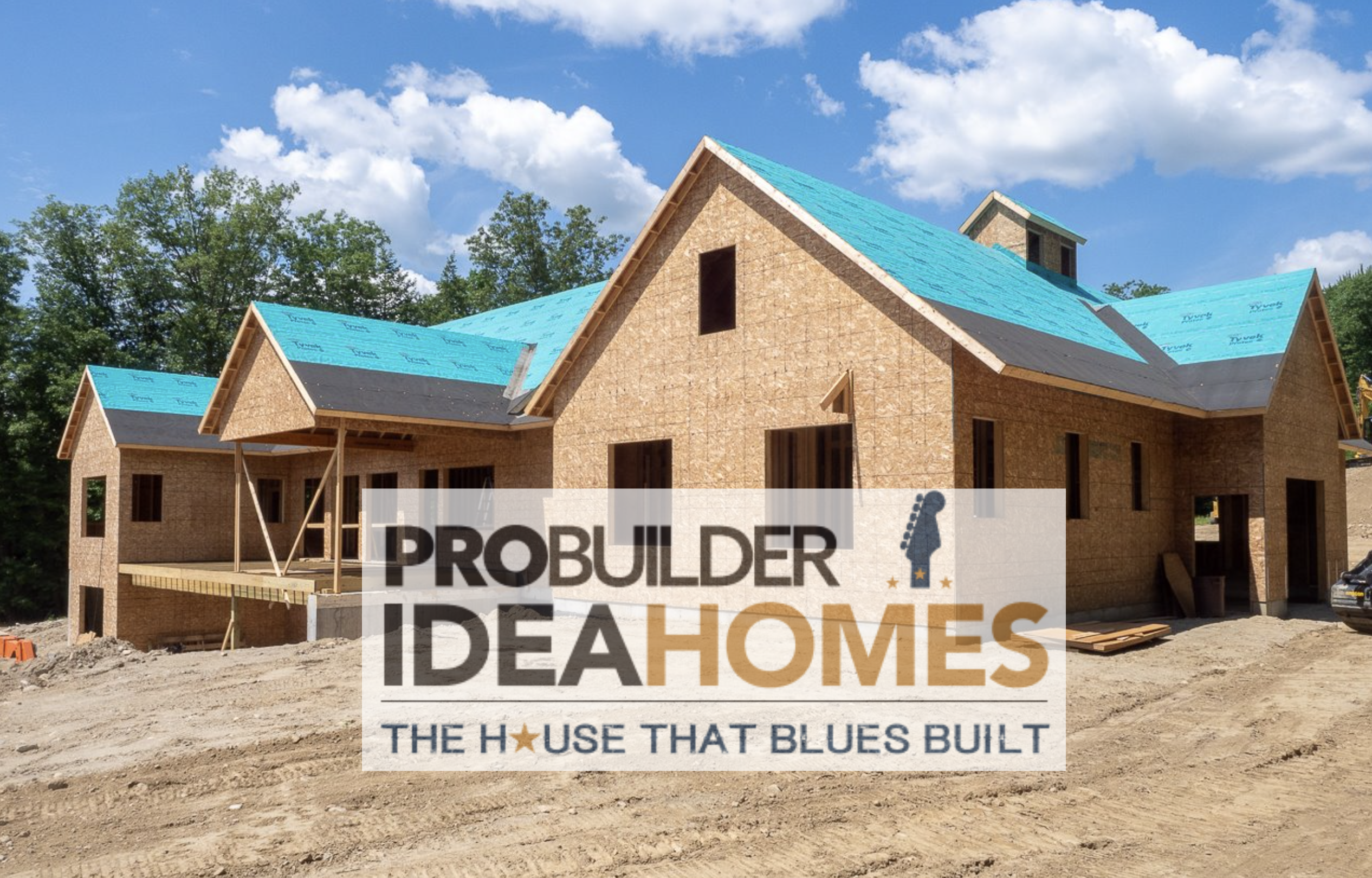Photo: Ceiling beams made of reclaimed pine and kitchen countertops with recycled material are among the green features in this LEED Gold-certified home in San Antonio, Texas. Builder: Stephen Jackson; Architect: OCO Architects
Many green-building advocates would say that “high-end green” is an oxymoron — that large, lavish custom homes can’t possibly be sustainable. While clients may not walk into a builder or architect’s office thinking green, much like other home buyers they’re still looking to reduce their utility bills and do something smart for the environment. How far they decide to take it is just a matter of degree.
“Every client has different shades of green interest,” says Michael Lenahen, president of Aurora Custom Homes in Ponte Vedra Beach, Fla. “I find out what’s important to them.”
Lenahen notes that many of the products used today, including dual-speed air handlers, low-flush toilets, Energy Star appliances, and low-VOC paints, have been around for a long time. “I give my clients a menu of different ideas and they just start checking them off,” he says. “But they never walk in and say they want a green home.”
While building green is important, certification isn’t critical to every project. For instance, the home featured on page 12 was built to LEED guidelines but is not LEED-certified. “As far as we’re concerned, it’s an extraordinarily enriched green home,” says Lenahen. “We made a significant contribution to energy and resource conservation; the plaque or the designation wasn’t important to me, or the client.”
Green infill grabs gold

Mickey Conrad of OCO Architects in San Antonio, Texas, hasn’t designed a single-family home in years; his practice is largely educational and institutional projects. So when he started designing his own home, “it was like rekindling an old flame,” Conrad says.
Conrad and his wife, who are empty nesters, found a 50-by-160-foot lot in an historic neighborhood near downtown San Antonio. Front-loaded garages are prohibited, and due to the side-yard driveway and a 5-foot setback, the maximum house width is about 34 feet.
“The concept for the house, both exterior and interior, was to blend in with the neighborhood,” he says. “Although there are a number of grand estate houses built in the mid-1800s, there are also some very handsome, modest houses with nice proportions and simple details.”
Conrad designed a 3,300-square-foot, master-down plan with two secondary bedrooms and a bath upstairs, as well as a detached, side-loaded garage in the rear. An apartment above the garage provides accommodations for longer-term guests. Between the house and garage is a small yard and vine trellis.
“I really wanted to design a high-performing house,” he says. “In my practice at OCO Architects, we’ve done several LEED projects, but I wanted to see how much effort it took to get LEED certification for my home.”
Conrad used rigid-board insulation for the exterior walls (a carryover from his nonresidential work). “Two inches of rigid polyisocyanurate over the exterior sheathing insulates 100 percent of the wall, versus 60 to 75 percent with batt insulation,” he says. “It’s a continuous thermal barrier.”
Long-leaf pine, salvaged from an old mill building, figures significantly in the project. Conrad used it for the floors, ceiling beams, and interior and exterior columns. The home also features a high-efficiency HVAC system, Energy Star lighting and appliances, low-flow plumbing fixtures, and native plant material. All of the concealed framing is engineered wood made from scrap lumber.
The builder, Stephen Jackson, is a LEED AP who built the first LEED Platinum home in San Antonio. The Conrad home is LEED Gold certified. Due to its simple, clean design, it was cost-effective from a construction standpoint, but ultimately the upscale finishes made it a high-end project by San Antonio standards, Jackson says.
Going green with modular

When a prospective client dropped into builder/architect Tony Hirst’s office in Kittrell, N.C., to talk about building a vacation home on nearby Lake Gaston, Hirst said, “I specialize in modular homes. What do you think about that?”
Since he was a commercial architect and had written his thesis on modular construction, the client liked it very much.
He presented a set of plans, elevations, and details for a two-story home to Hirst, who adapted the design for modularization by HandCrafted Homes of Henderson, N.C.
The 3,322-square-foot home consists of five modules — two for the master-suite wing and screened porch; two for the great room, kitchen, and dining room; and one for the storage/utility room on the ground floor. The second floor is approximately 85 percent factory-built, while the lower level was built on site along with the porches and garage.
Hirst went for maximum curb appeal on both the lake and street sides. He set the master wing on a 45-degree angle to the main house so the owners can see the water while lying in bed. The primary living areas are spread out across the sloping lot, capturing views and natural light. Decks on the second floor bridge the two parts of the house, and there is a large grilling porch off the dining room.
The clients are extremely happy with the design and the speed of construction, Hirst says. The home was completed in four months, compared to six months to a year for a stick-built house.
Hirst, who is a Certified Green Professional, suggested solar photovoltaics, solar radiant-floor heat, and a solar water heater, all of which were implemented. The metal roof, vinyl siding, and wood-look vinyl shakes are maintenance-free.
Bill Murray, general manager of HandCrafted Homes, points out that building systems, such as modular construction, are inherently green. “We use engineered studs and lumber, and we recycle a tremendous amount of waste,” Murray says.
But HandCrafted takes steps that other modular companies don’t. For example, only finger-jointed studs (wood studs repurposed from scrap lumber) are used for vertical applications. HandCrafted also used radiant-barrier sheathing for the roof to reduce heat gain in the attic. Low-e, argon-filled windows are standard.
“We use low-flow faucets and showerheads, and Energy Star-rated products,” Murray says. “Our houses leave the factory Energy Star-ready.”
High-profile green

After a flood deluged the basement of their 1920s colonial home in Mount Kisco, N.Y., Robert Kennedy, Jr., and his wife, Mary, discovered they had a serious black mold problem. Their remediation efforts didn’t work, so the couple decided to rebuild.
Danbury, Conn.-based builder Jim Blansfield took on the challenge of creating a healthy living environment for the Kennedys. The design/build team also included Patrick M. Croke, Architect, Bedford Village, N.Y.; Brooks Washburn Architect, Potsdam, N.Y.; and interior designer Robin Wilson, Robin Wilson Home, New York.
Zoning constraints wouldn’t allow a complete demolition, so Blansfield had to preserve the structure of the old home. “It couldn’t be moved anywhere else on the property because we needed to use the original septic system,” he says.
The house was jacked up on steel beams while Blansfield’s team rebuilt the mold-ridden, masonry foundation. Eventually, they had to dismantle the home because it was becoming too dangerous to work underneath it. Reclaimed materials from old buildings in upper New York State played a key role in the renovation, including studs, oak flooring, doors, slate roofing, and stone veneer. “That gave it a lot of character,” he says.
At 8,515 square feet and $3 million, Blansfield says the Kennedy home “isn’t the greenest.” But it has the highest level of green certification he’s achieved to date: LEED Gold, NAHB Emerald Green, and 5-star-plus Energy Star-rated.
Among its many features is a geothermal HVAC system; a solar thermal system for hot water; solar PV roof shingles; radiant floor heat; a gutter system that allows stormwater runoff to be easily collected from downspouts; recycled newspaper cellulose insulation for the walls and a sprayed cellulose blanket in the ceiling plenum; and low-VOC paint. The electric meter runs backward so the Kennedys can sell surplus energy back to the grid.
Architect Brooks Washburn admits that making a home of this size green is “a slippery slope,” but there are many energy tradeoffs. “For example, in the summer, excess heat vented by the air-conditioning system is recaptured to heat water for the household, as well as the pool,” says Washburn.
Getting to greenish

When Aurora Custom Homes was hired to build a 13,500-square-foot residence in Ponte Vedra Beach, Fla., for a couple relocating from Houston, the client was not initially concerned about sustainability.
“He never said he wanted to build a green home,” says Aurora’s president, Michael Lenahen. “But as the project grew in size, it dawned on him that he had to do something to hedge against what would be extraordinary utility bills.”
Beneath its traditional skin, the home is equipped with the latest energy-efficient technologies and green-building features. Insulated concrete forms super-insulate the exterior building envelope, and spray foam insulation seals the attic, minimizing heat buildup. Mature shade trees block the sun’s heat from penetrating the low-e windows, and geothermal heat pumps use well water to cool the home.
“We knew that the electric bill was projected to be $3,500 to $3,800 a month,” Lenahen says. “Our goal was to get it down close to $1,000 a month.”
Most of the design work had already been done by the client before he contracted Lenahen. An energy company CEO who travels around the world building power plants for emerging nations, the client would sketch out plans and elevations for his dream home whenever he had some down time.
“For someone with no direct architectural skills, he came up with a concept that was tremendously buildable,” says Lenahen. A structural engineer did the dimensioning and detailing: “It’s very, very close to what we have now.”
Located one block from the ocean on a 3/4-acre site, the home overlooks a lake, lagoon, and golf course. It can accommodate family and friends for visits of a week or more, as well as gatherings of up to 60 people. A reflection of the client’s passion for the work of Andrea Palladio and other classical architects, it utilizes the principles of symmetry, axiality, and proportion to create order, harmony, and balance in an elegant and comfortable setting. The main house is flanked by north and south guest houses, each with their own garages. Classical-inspired pavilions, antique fountains, and formal gardens intertwine with such modern conveniences as a summer kitchen.
Energy engineer and consultant Paul Nicholson of Seaside Endeavors, Neptune Beach, Fla., advised the builder and client to install solar PV roof panels, which will generate renewable electricity and save the homeowners thousands of dollars in energy bills over the life of the home. Other features include electric car-charging stations; geothermal water-to-air heat pumps; dual-speed air handlers; and dual-flush toilets. A 20,000-gallon underground cistern collects rainwater for irrigation.
“By the time we finished this home, we had tapped into almost every possible way of reducing its energy and water consumption and ensuring good indoor air quality,” says Lenahen.
How Green is Custom Building?
For the most part, custom-home builders are embracing green, but they’re doing it selectively. Stephen Jackson, LEED AP, president of Jackson Construction in San Antonio, Texas, says there’s been a huge spike in the number of local builders who are beginning to offer green-building concepts, materials, and technologies on a piecemeal basis.
“Energy efficiency is usually the first thing that’s adopted,” Jackson says. “But on some level, all of them are picking it up.”
San Antonio builders typically start with the local program, Build San Antonio Green. At this point, there aren’t many LEED-certified homes in the area, which Jackson attributes to “fear of the unknown” — in other words, paperwork.
“Once you get into the LEED process, the paperwork is really not that extensive,” he says. “There are more inspections and verifications required, but they make the building better, and that’s an added value for the homeowner.”
For Danbury, Conn.-based builder Jim Blansfield, there’s no question that having a designation such as LEED AP or Certified Green Professional (CGP) from NAHB is quickly becoming a requirement for custom builders who want to stay in the game. “LEED, especially, sets you a little bit apart from other builders, and I think it earns you acceptance within the architectural community,” says Blansfield.
Michael Lenahen of Aurora Custom Homes, who recently earned his CGP designation, is surprised more custom builders in the Jacksonville, Fla., area aren’t pursuing a formal education in green building.
“But I think they’re building greenish homes, whether they know it or not, because the products available today are more energy-efficient and less wasteful of natural resources,” Lenahen says. “No one’s pushing it on us. It’s happening.”
Related Stories
Custom Builder
3 Questions Answered About Reliable Energy in Home Construction
Energy expert Bryan Cordill makes a case for why and how propane is an answer to growing concerns about reliability and resilience in home construction
Business
PERC Highlights Sustainability and Efficiency at IBS with 'Clean Build Conversations'
Hear from industry standouts Matt Blashaw and Anthony Carrino at this hour-long Show Village event
Construction
How to Air Seal the Garage
A poorly sealed wall or ceiling between the garage and the main house can let harmful fumes into the living space
New Home
Hosting Multiple Generations for Generations to Come
Despite juggling numerous program and site considerations, architect Joel Wenzel designed a long-lasting, multi-generational retreat that nestles seamlessly into its bucolic surroundings
Custom Builder
How the Zero Energy Ready Home Update Emphasizes Resilience and Decarbonization
ZERH Version 2, released in December of 2022, will boost the efficiency and performance of single-family homes, preparing them for the increasingly oppressive weather
Business
The Fundamental Integration of Sustainability and Architecture
California architect Ryan McDaniel provides real-world insights and examples into how he approaches sustainability for his projects.
Codes & Standards
An Introduction to the Zero Energy Ready Home Program
Late in 2022, the U.S. Department of Energy's Zero Energy Ready Home program announced the rollout of ZERH Single Family Version 2
Construction
Guest Column: Residential Construction Trends to Follow in 2023
PERC shares homeowner trends to keep on your radar in the New Year.
Business
Stretching the Budget to Meet the Massachusetts Stretch Code
We take a look at Massachusetts' Stretch Code and how it's affecting design and construction on The House That Blues Built
Green & Sustainable
Sustainability Pioneers: 5 Brands to Watch
These leading manufacturers are committed to creating a more sustainable future for the building industry. Here are the steps they're taking to accomplish that




